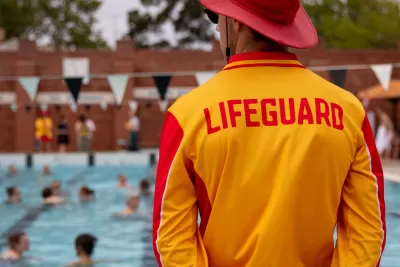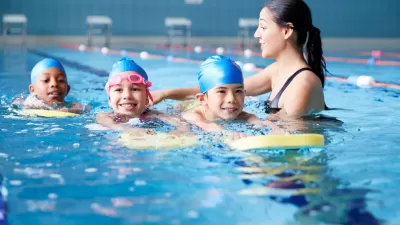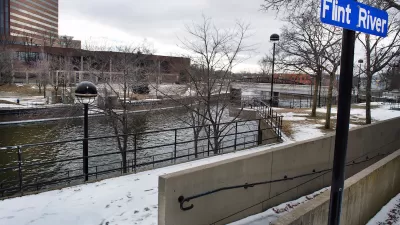For many children who grow up without access to pools or lakes, access to swimming lessons and facilities can provide lifesaving skills.

Far from just being a fun way to cool down on a hot summer day, public pools can help children learn key skills that could save their lives, writes Mara Gay in The New York Times.
An estimated 4,000 people die by drowning in the United States each year—an average of 11 every day. Yet “the United States is, for a majority of its citizens, a swimming desert where, according to a Red Cross survey, more than half of the population lacks basic swimming abilities and millions are without access to safe places to enter the water.”
Now, a coalition of experts published the nation’s first Water Safety Action Plan, “a much-needed, 10-year national road map to reduce drowning.” As Gay explains, “Some recommendations, like increasing the use of life jackets in lakes, oceans and rivers, could be carried out by states and local governments. Others — like the creation of a public health surveillance system to collect better data around drowning — are worthy of urgent action from the White House and Congress.”
Gay suggests U.S. cities should also build more public pools, create other safe places to swim, and subsidize swim lessons and support lifeguarding jobs. Of the more than 10 million pools in the United States, only 309,000 are public, forcing people into crowded beaches and sometimes dangerous bodies of water. “Like libraries and parks, [public pools] are an essential piece of social infrastructure in a democracy.”
FULL STORY: More Public Pools Could Save Thousands of Lives

Alabama: Trump Terminates Settlements for Black Communities Harmed By Raw Sewage
Trump deemed the landmark civil rights agreement “illegal DEI and environmental justice policy.”

Study: Maui’s Plan to Convert Vacation Rentals to Long-Term Housing Could Cause Nearly $1 Billion Economic Loss
The plan would reduce visitor accommodation by 25% resulting in 1,900 jobs lost.

Planetizen Federal Action Tracker
A weekly monitor of how Trump’s orders and actions are impacting planners and planning in America.

Waymo Gets Permission to Map SF’s Market Street
If allowed to operate on the traffic-restricted street, Waymo’s autonomous taxis would have a leg up over ride-hailing competitors — and counter the city’s efforts to grow bike and pedestrian on the thoroughfare.

Parklet Symposium Highlights the Success of Shared Spaces
Parklets got a boost during the Covid-19 pandemic, when the concept was translated to outdoor dining programs that offered restaurants a lifeline during the shutdown.

Federal Homelessness Agency Places Entire Staff on Leave
The U.S. Interagency Council on Homelessness is the only federal agency dedicated to preventing and ending homelessness.
Urban Design for Planners 1: Software Tools
This six-course series explores essential urban design concepts using open source software and equips planners with the tools they need to participate fully in the urban design process.
Planning for Universal Design
Learn the tools for implementing Universal Design in planning regulations.
Caltrans
Smith Gee Studio
Institute for Housing and Urban Development Studies (IHS)
City of Grandview
Harvard GSD Executive Education
Toledo-Lucas County Plan Commissions
Salt Lake City
NYU Wagner Graduate School of Public Service





























